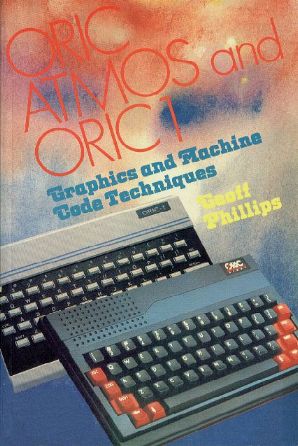BOOK REVIEW #9
![]()
Oric Atmos and Oric-1 Graphics and Machine Code Techniques
by Geoff Phillips
 |
INTRO. Isn’t it gorgeous ? Oh yes -
this time we are going to have a look at one of the most
sought after books for the Oric. Geoff Phillips tome with
the long title . THE BOOK. This book was released a little late on in the career of the Oric. For that reason and due to a bit of a lack of advertising the book didn’t sell like it should. There aren’t too many good books for advanced
programming and so when the guys that want to try that
found out about Geffers book, they all wanted one. The
people that did have one though, were not so willing to
part with such a useful item and so it became number one
on the Oric enthusiasts ‘most wanted’ list. WHAT’S IN IT ? There are 9 chapters of useful
information. The only similar books are the Advanced User
Guide and Getting More from Your Oric. Take away the
Disassembly from the AUG and shove the rest of the two
books together and you have something resembling Geffers
book. |
| of the screens and keyboard, cassette
system and printer interface. The information at this stage isn’t perhaps quite so detailed as in the other two books, but there is sufficient and things gradually get more technical. I
said this book was for the advanced programmer, and that
is true, but there is plenty of information in here that
others will find useful. Indeed, the next chapter deals
with how BASIC works and has such tips as how to get a
proper random number when using the RND function. In theory, if you can program one computer with a 6502
you can program another with a 6502. It isn’t quite
so simple as the structure of chips and memory make a
difference. this is where this book helps, telling you
how Oric’s funny screen system can be controlled and
giving detail specific to the Oric which a capable
machine code programmer would need to know to be able to
program that machine properly. Finally we have some useful utilities and example
programs to stretch the Oric ‘to the limits’.
Not bad, but I think Dbug and Twilighte are now pushing
beyond such supposed limits ! |
|
© Copyright 2000 by S.D.Marshall email me